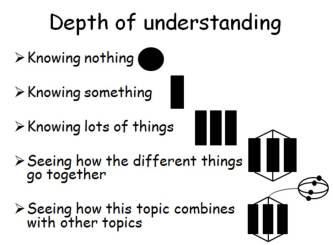There is so much to discuss an d reflect on when watching the BBC programme; “Are our kids tough enough? Chinese School” which finishes next week. I’m not going to analyse the teach strategies (or lack therof) displayed in the programme – everyone appears to playing a very specific part in the ‘experiment’ and they are keeping tightly to their roles even when it is apparent that they are not being effective. I doubt any professional, from any country, would be so stubborn and closed minded to act in this way for so long. The difference between respect and deference towards teachers is also an interesting point that comes up in this programme.
d reflect on when watching the BBC programme; “Are our kids tough enough? Chinese School” which finishes next week. I’m not going to analyse the teach strategies (or lack therof) displayed in the programme – everyone appears to playing a very specific part in the ‘experiment’ and they are keeping tightly to their roles even when it is apparent that they are not being effective. I doubt any professional, from any country, would be so stubborn and closed minded to act in this way for so long. The difference between respect and deference towards teachers is also an interesting point that comes up in this programme.
Before going any further, I am well aware that we see on this programme in far from action research – it is designed, carried out and then edited for entertainment (which in this context means controversy).
What I wanted to reflect on was a point made by one of the Chinese teachers, and it has been made in both programmes so far. This was that, in her opinion, British students are lazy and unmotivated because the welfare system means they will not starve or be homeless, even if they fail at school. I thought about this for a while after watching, and came to realise that she has just missed the point; although perhaps not by much.
From my experience of working in schools, there is a growing complacency amongst some students about their work, effort and the impact it has on their eventual qualifications. This has no doubt led to the rise in prominence of the ‘growth mindset’, amongst other things, as a way of emphasising to students that it is their effort and attitude that determines their success rather than innate ability. Unfortunately, for too many students in the British system just now, that simply isn’t true. You see, the risk of failing does not just impact on the student; it also impacts on the teacher and the school.
The increased accountability that teachers have faced in the time I have been teaching (8 years)has been significant. I do not for a minute think that we as professionals should not be held to account for our performance, but it is undeniable that teachers’ performance (at least as far as it can be determined from exam results) is more rigorously analysed than ever before. The impacts of not hitting the required standards are also much increased, so the risk of an individual student failing is now much greater both for the teacher and for the school as a whole. The positive side to this is that students are not forgotten or left alone as they once might have been, that interventions are put in place and teachers supported to ensure that all students have the best opportunity possible to achieve.
However, it is also true that the growing culture of “we can’t allow them to fail” has other impacts. It leads to some teachers and schools pushing the boundaries of acceptable practice in areas such as controlled assessments. It leads to teachers being put under huge pressure from higher up to get students to reach their target grades, however appropriate those targets are to the individual student. It leads to booster classes, catch up classes, intervention groups and so on that mean many year 11 students spend significant amounts of time either over lunch breaks or after school working with teachers. Whilst these appear to be good, and are put in place with the very best of intentions, they promote the belief amongst students that any gaps they have in their knowledge or understanding is down to the teacher to put right. In short, they take the pressure and perceived risk off the student themselves.
The BBC programme is based on a year 9 group. What does year 9 look like in your school? It could so easily look just like this programme portrays – a time where the students so no reason to work hard and do not see any risk in making minimal progress. Why should be there a risk? After all, GCSE exams are more than two years away – plenty of time to catch up. With staff focussing on year 11 each and every year, this cycle continues.
So, if I believe that it is the teachers and school who students believe they can fall back on as they approach exams and things are not on course, then what can be done to improve matters? It is too easy to say ‘concentrate on earlier years, not just year 11’ – we all say this every September and it just never happens, because we can’t risk it. The current accountability culture which is meant to ensure all teachers do the best job they possibly can is what is causing teachers to protect their students and not expose them to the risk of failure, thus not preparing them for the competitive world in the way we should be. The thing is, there are a tiny number of teachers around who don’t think and act like this already – the increased accountability increases stress and pressure without affecting performance for the vast majority of staff. Thinking back to when I was at school, I am confident that my teachers cared about my education just as much as I do about my students’. However, I was never offered an after school class even approaching exams. I never thought about the impact my grades would have on my teachers – I knew it was all about me and the work I put in.
My call then is this – seek opportunities for students to experience real risk and potential failure. Do it in ways that matter to students without it affecting their final grades. If anyone has any suggestions on how to increase the risk of failure that students have I would love to hear about them. To get it started, we use public displaying of mock exam results and posting results home regularly as a way of encouraging students to prepare properly for mocks.
Finally, one last thought. The premise of the programme is to test which way of teaching is best. All I have seen is that it is clear that the Chinese methods shown simply don’t work with students brought up in the British educational system and wider culture. Wouldn’t it be interesting to see the reverse programme made? Send a small group of British students to China to see if their wider range of strategies and more individualised approach works with Chinese students in China.














